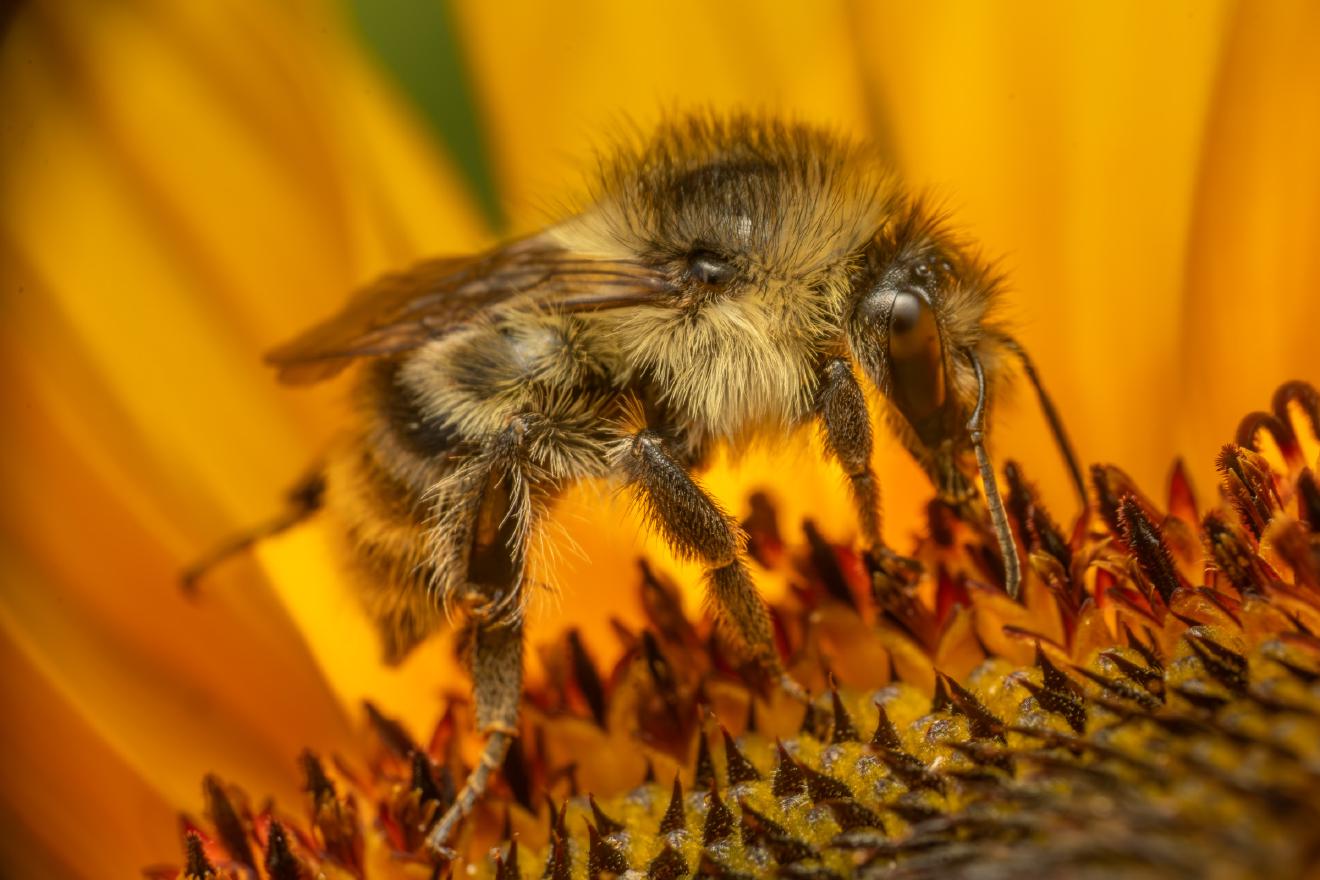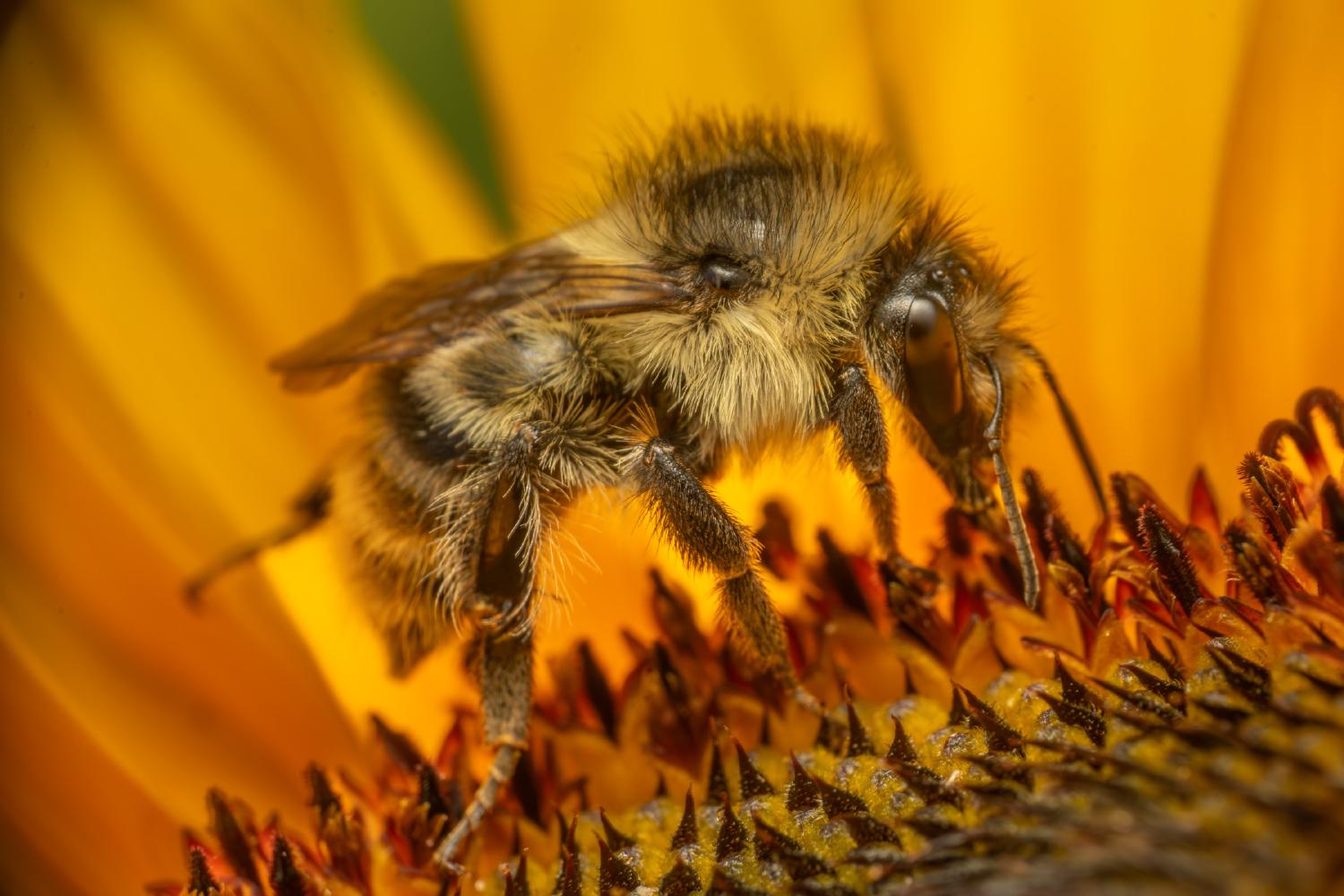Shrill Carder-Bumble bee
Lat. “Bombus sylvarum“
species
of genus
“Bumble Bees“
1 species
The Shrill Carder Bee (Bombus sylvarum) is a small bumblebee that is mostly pale yellowish in color with black bands across the thorax and abdomen, and an orange tip to the abdomen. The flight period for this species lasts from April to September, and each nest can contain around 100 worker bees. It is found in herb-rich grassland and feeds on nectar and pollen from various flowers. The species is declining in numbers across Europe due to habitat loss and intensification of agriculture. In the UK, it is now restricted to a few small areas in southern England and south Wales and is included in the UK Biodiversity Action Plan. It is also an endangered species in Ireland.
Description
It is a small bumblebee; queens are 16–18 mm (0.63–0.71 in) long and female workers are 10–15 mm (0.39–0.59 in). It is mostly pale yellowish in colour with a black band across the thorax, two black bands across the abdomen, and an orange tip to the abdomen. It flies rapidly and queens produce a high-pitched buzz.
Behaviour
The flight period lasts from about April to September. The queen bee emerges from hibernation in the spring. She makes a nest on or slightly below the surface of the ground among open vegetation. An old mouse or vole nest may be used. By summer, the nest may contain around 100 worker bees. Each nest requires about 10 km2 (3.9 sq mi) of suitable habitat. It occurs in herb-rich grassland where it feeds on nectar and pollen from a variety of flowers, especially ones that are complex or have long corollae. Important food plants include knapweed, woundwort, clover, vetch, red bartsia, and narrow-leaved bird’s-foot trefoil.
Status and conservation
It is threatened by habitat loss and intensification of agriculture and is declining in numbers across Europe. In the United Kingdom, it was common until the early 20th century, but is now restricted to a few small areas in southern England and south Wales. The species is included in the United Kingdom Biodiversity Action Plan. It is also an endangered species in Ireland.
References
ARKive. Shrill carder bee (Bombus sylvarum). Accessed 18 December 2008. Edwards, Mike & Martin Jenner (2005) Field Guide to the Bumblebees of Great Britain & Ireland, Ocelli. ISBN 0-9549713-0-2.
External links
UKBAP: Shrill Carder Bee (Bombus sylvarum)


Ancestry Graph
Further Information
Copyright

This article uses material from the Wikipedia article Bombus sylvarum the free encyclopedia Wikipedia which is released under Creative Commons Attribution-ShareAlike 4.0 International License). On Wikipedia a list of authors is available.
